This is where we make space for our permaculture pioneers and founders to share their experiences, wisdom and guidance. These individuals have provided the soil from which permaculture design in the north of England will flourish. We intend to keep track of our roots and our heritage, mapping where we have come from, so we can move forward with insight, confidence and skill. Let's turn to the voices and stories of our experienced practitioners…
In this issue we continue our interview with Angus Soutar and feature an article from Maureen Boustred about land in Kent.
Permaculture journeys with Angus Soutar
| You may read the first part of this interview here | |
|---|---|
| Angus Soutar is the Principal and Founder of the Northern School of Permaculture. He has over 25 years experience of practising and teaching permaculture. | 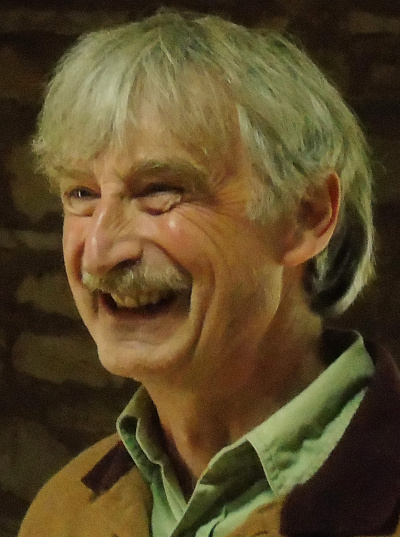 |
3. You mentioned before that the focus of your work is on permaculture design. Can you say a bit more about that?
Permaculture is about functional design. Design is not just about restaurants tastefully arranging food on bits of slate or serving it up on first generation i-Pads. It's not just the styling of haircuts. In permaculture our designs have to function well if there is to be any value to them. Styling comes later, or rather it emerges from functional design. As in Nature, form follows function. The more "natural" something is, the more us humans tend to see it as beautiful (or, at least, that's the way it looks to the more artistic and sensitive people amongst us).
Permaculture is also about conscious design, it involves a lot of observation and reflection, and reflection on our design process itself. It's this aspect that allows us to communicate effectively with other designers and, probably most important, to teach others how to do what we can do.
There is an underpinning theory that supports our practice in permaculutre, yet we are still developing that theory, day by day, as it springs out of our practice and reflection. The word I prefer to use here is "praxis", a word that has been around for a while, I can recommend Aristotle's thoughts on praxis, should you want to examine the idea further.
Permaculture design is itself a learning process, we observe nature, we make our predictions, we act and then we learn from the new system as it emerges. So, it's about continual learning, it's about interacting with Nature and experiencing what happens, testing our ideas in Nature as soon as we feel that it's safe to do so. Then we sit back for a bit and let things happen, we get more feedback and then we can continue the process.
As you know, it's very difficult to predict anything, particularly about the future. For us, the problem is the solution: if we can't predict things properly, then it's best not to try too hard. Instead, we need to be ready for whatever Nature may confront us with, we strive to be "anti-fragile". But we seem to have some resistance to the fact that we can't plan and control everything that's round about us. One of my main tasks is to get people to relax and get used to the idea that we're not very much in control of anything at all, much as we like to think that we are.
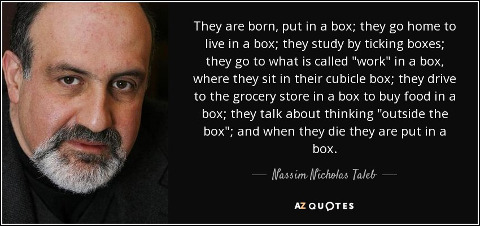 |
"...we're not very much in control of anything at all" |
| Nicholas Nassim Taleb's uses "anti-fragile" to extend the idea of "resilience", this video gives a good summary. |
 |
So, with permaculture, we go about our business in a completely different way to most people in the sophisticated culture of our highly developed world. Which is why they find the permaculture approach a bit impenetrable at first, and why supporting apprentices and teaching permaculture requires a bit more skill than most people give us credit for.
But we can't really do it any other way, because the systems we are developing should be inspired by Nature, and Nature is incredibly complex, even in the simplest of her systems. We need an approach that reflects that. The only design process that I can think of that comes anywhere close to permaculture design is biomimicry. There, they copy the way that Nature does it, in particular, they often copy the way that the human body does it. But the distinction, from what I can see, is that biomimicry has no real ethics, certainly not in the way that we have with permaculture.
In any case, in permaculture we cause things to happen in a natural way, which I think is subtly different from a lot of biomimicry, and certainly distinct from the practice of direct genetic manipulation. In a permaculture design, we have to allow for consideration of our underlying ethics - is this good for life on the planet? This itself gives us a further layer of complexity to deal with.
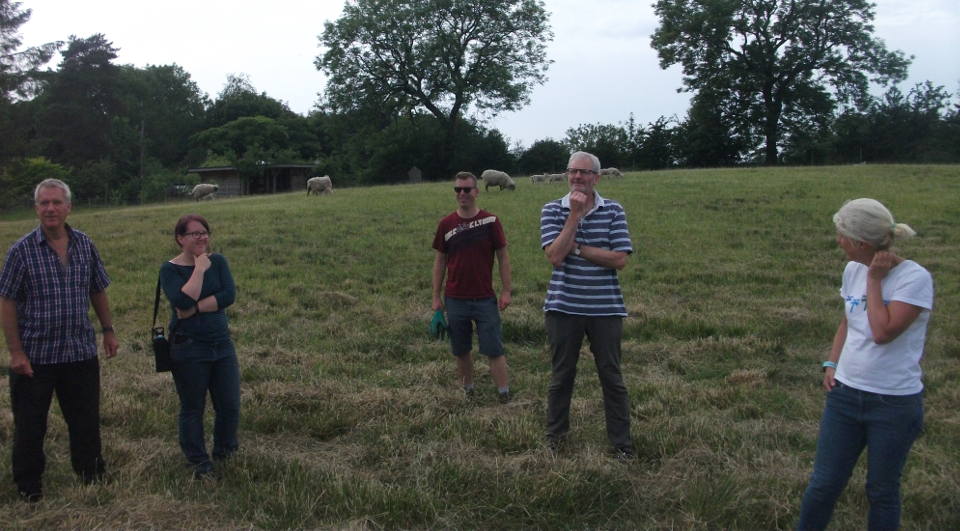 |
|---|
| Pondering the complexity at Brindhurst Farm |
 |
In fact, it takes us into whole new areas of complexity, where our work becomes really interesting, both from a scientific and from a societal point of view. I used to blunder around in this world, but I have come to realise that it's not just about applying the "received wisdom", I have to respond creatively. Conventional western science has little to help us here, giants may be standing on the shoulders of giants, but they're looking in another direction. Then we find that there are other giants standing around on other horizons, and we can go over there and see what they have been doing. Often, this is very, very useful because, unlike our advanced society, they have a world-views and languages that are much better suited to complexity, and much more in tune with Nature. The response may still be "scientific", but not in the way that most of us understand that term.
We are not the first humans to have embraced the kind of problems we are facing. I'm sure there are whole libraries of neglected work, and years of oral history, that will be of great use to us in the very near future, if we can only access them. It's just that our wonderful mainstream society has somehow belittled them and brushed it all aside.
4. You seem to be picking up on the principle of "Think Global, Act Local"?
The core of permaculture design is the local and the particular, we deal with people and place, developing an intimate understanding of how things are, before we even think about any action. Once we focus on where we are, then we can better make sense of the situation and we can come up with a particular set of proposals for improving life there.
"Think global, act local" - we need to reframe our thinking to include the importance of both thinking and acting both globally and locally. At the global end, first we had The Club of Rome and then Agenda 21, then the Millenium Development Goals. The trouble is with all these is that people think that achieving these goals is just a planning exercise. The local becomes somehow subservient to the global. Global goals can quickly become less than useful, distractions, simply because they are global proposals suggesting global responses to problems that are so complex that I reckon we can't solve them in that way. The only hope for us is to work at the local level. That's what we do, naturally, with permaculture design.
The approaches for the local are there, I've seen them spring up over the last 30 years. Bioregionalism, Transition Towns, Incredible Edible - every time one of these comes along I think, great, permaculture designers are already working on that, more chances to extend our reach. But it seems to be heavy going for most Initiatives. Hence our recent focus on a Plan B for Permaculture. /*
As I said before, it's really important to relax into the process, to let go and not get hung up about being right or wrong (we will find out soon enough). Then, through our work, we can have the opportunity to express our humanity in making things better, in every possible way. Rather than just going out and doing voluntary work, or coming up with a new "app" or some other wonderful piece of tech, we use permaculture to make things better for people and the ecosystem as a whole. In any case, I encourage people to think about how to make things better for themselves and their loved ones around them, before worrying too much about changing the world. Connect up the supportive locals, and you are on your way to a supportive Whole System.
/* We hope to publish an article on "Plan B for permaculture" in a future issue.
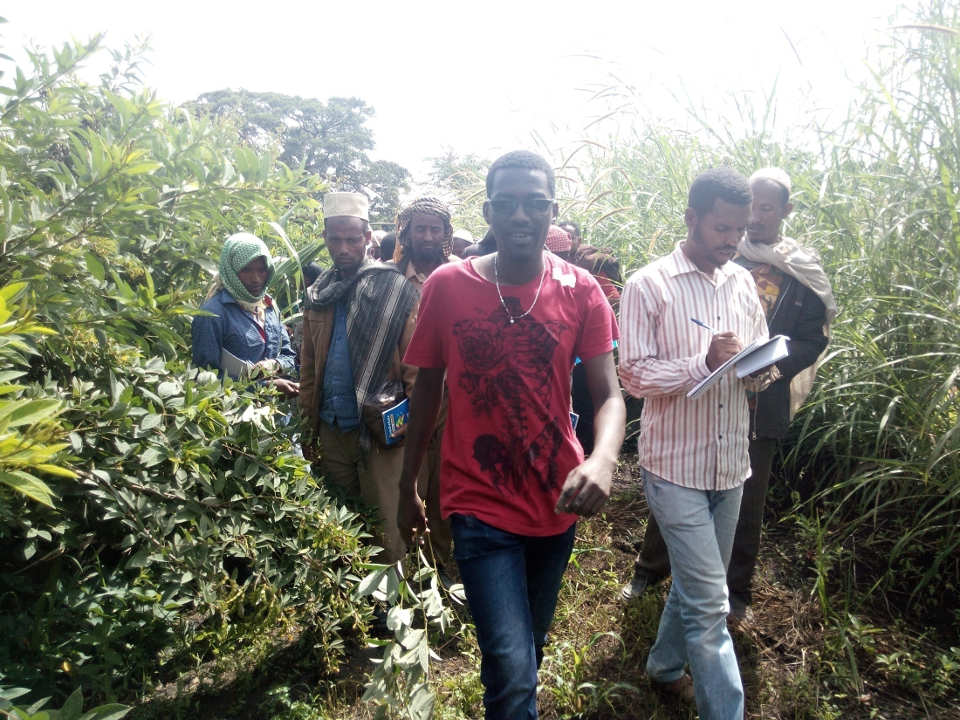 |
|---|
| Training the local farmers at Bwanchicota, Ethiopia |
 |
Woodberrie
By Maureen Boustred
Maureen has a lifetime of experience with homesteading, stretching from Burnley to New Zealand. Here, she remembers her time "making the best of a difficult piece of land" in rural Kent.
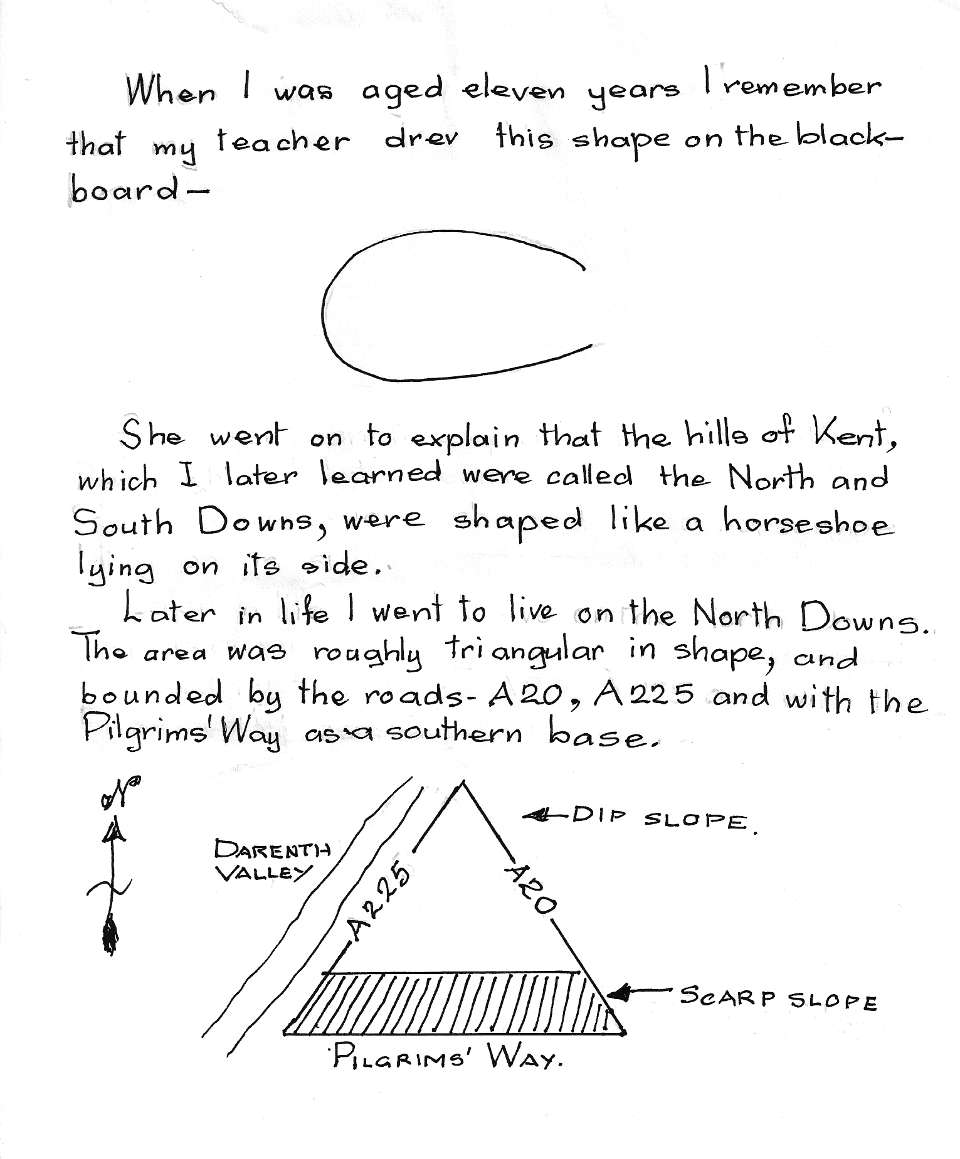 |
|---|
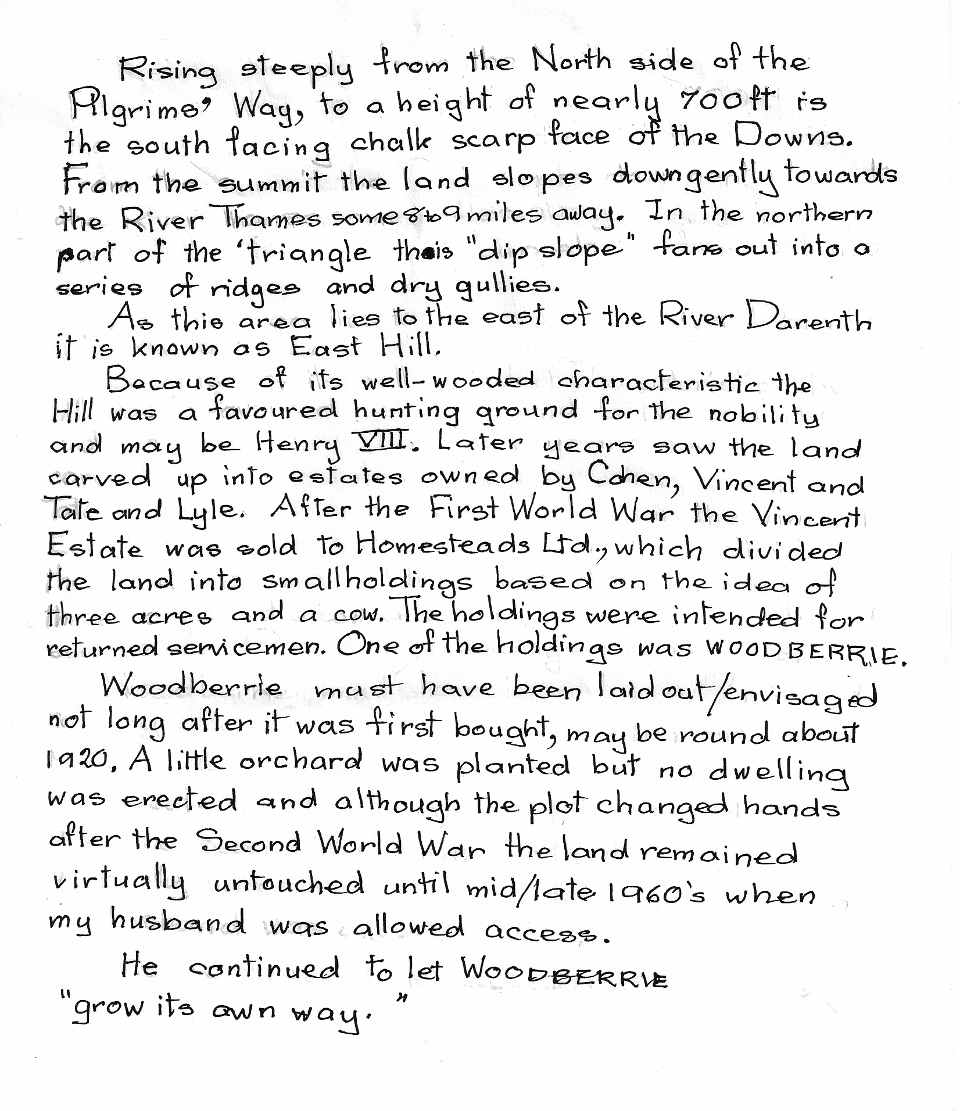 |
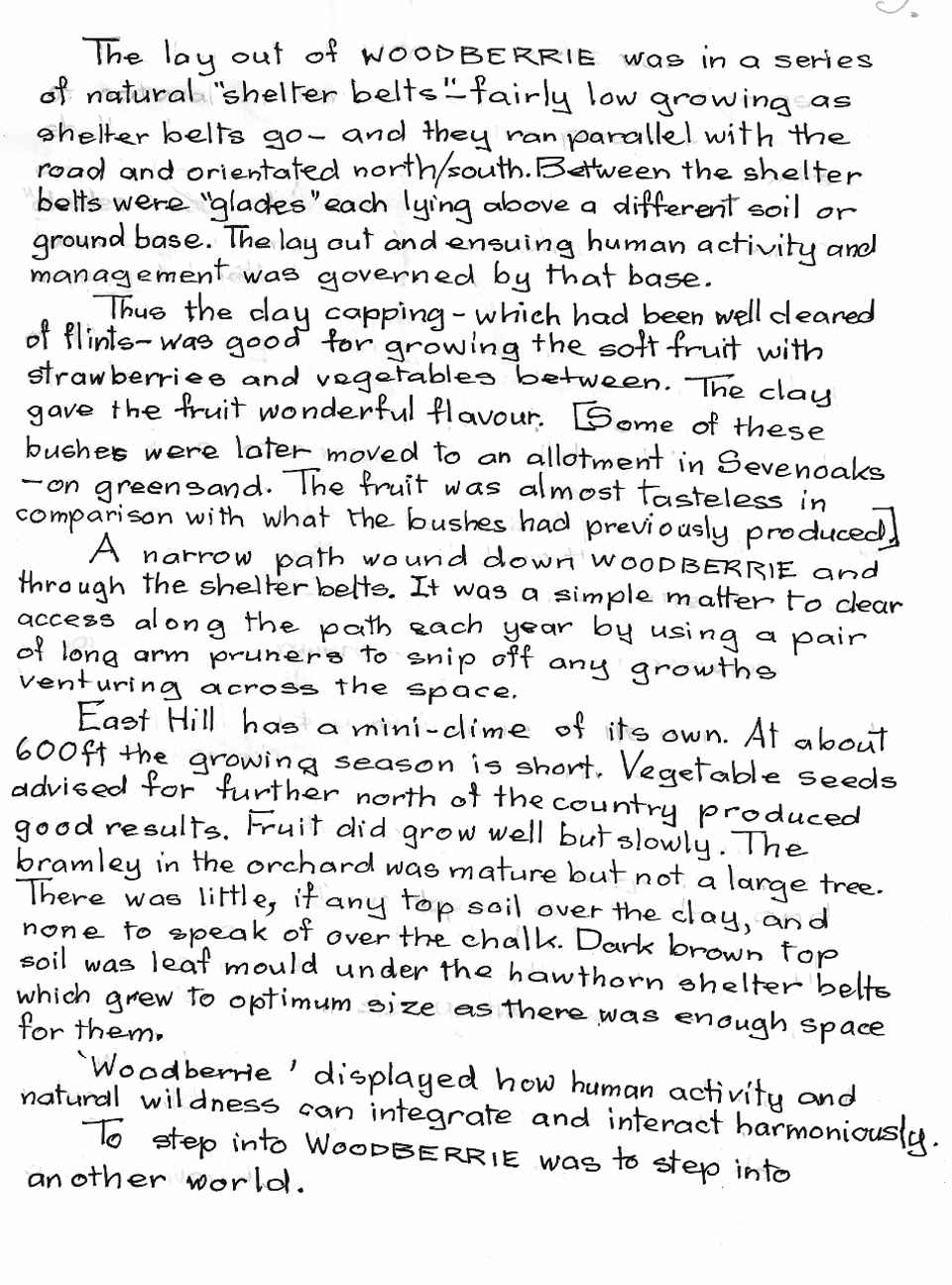 |
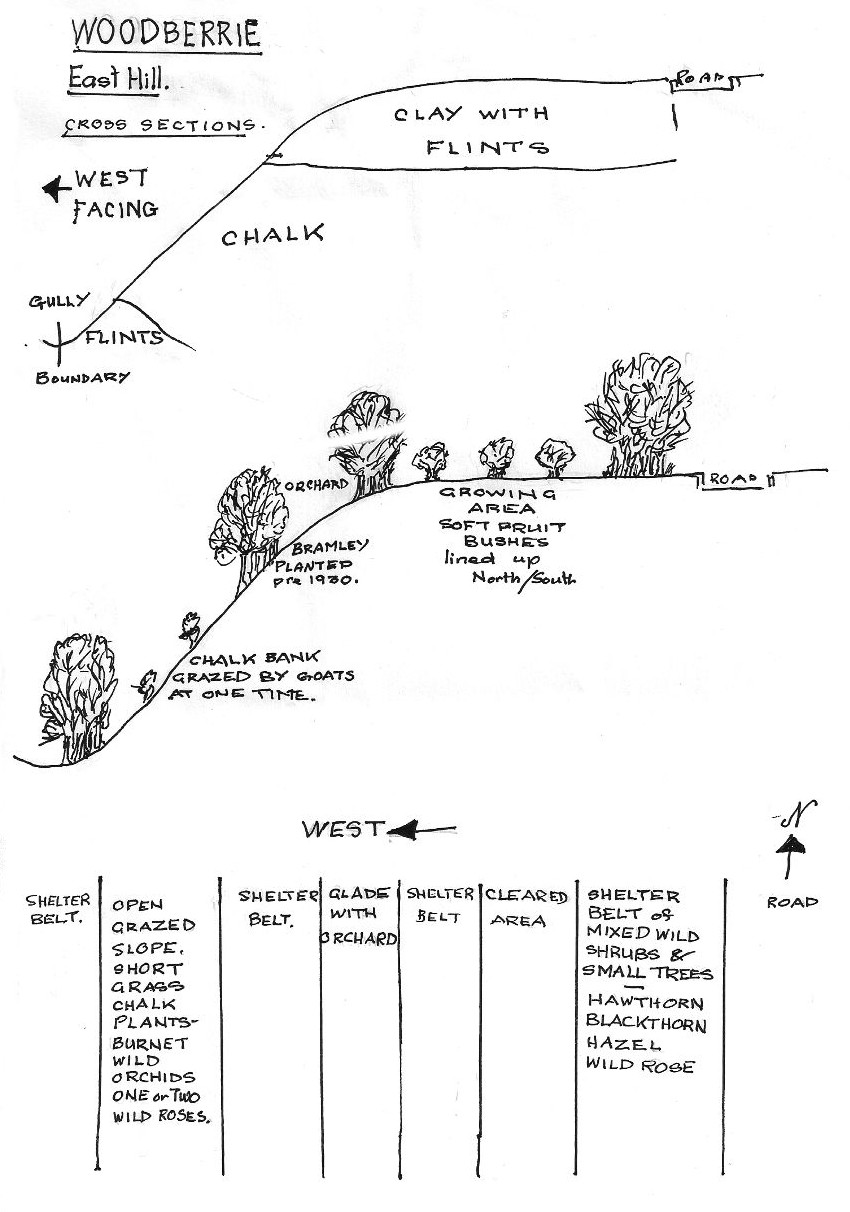 |
| Sketch of the site usage by Maureen Boustred |
| --- |